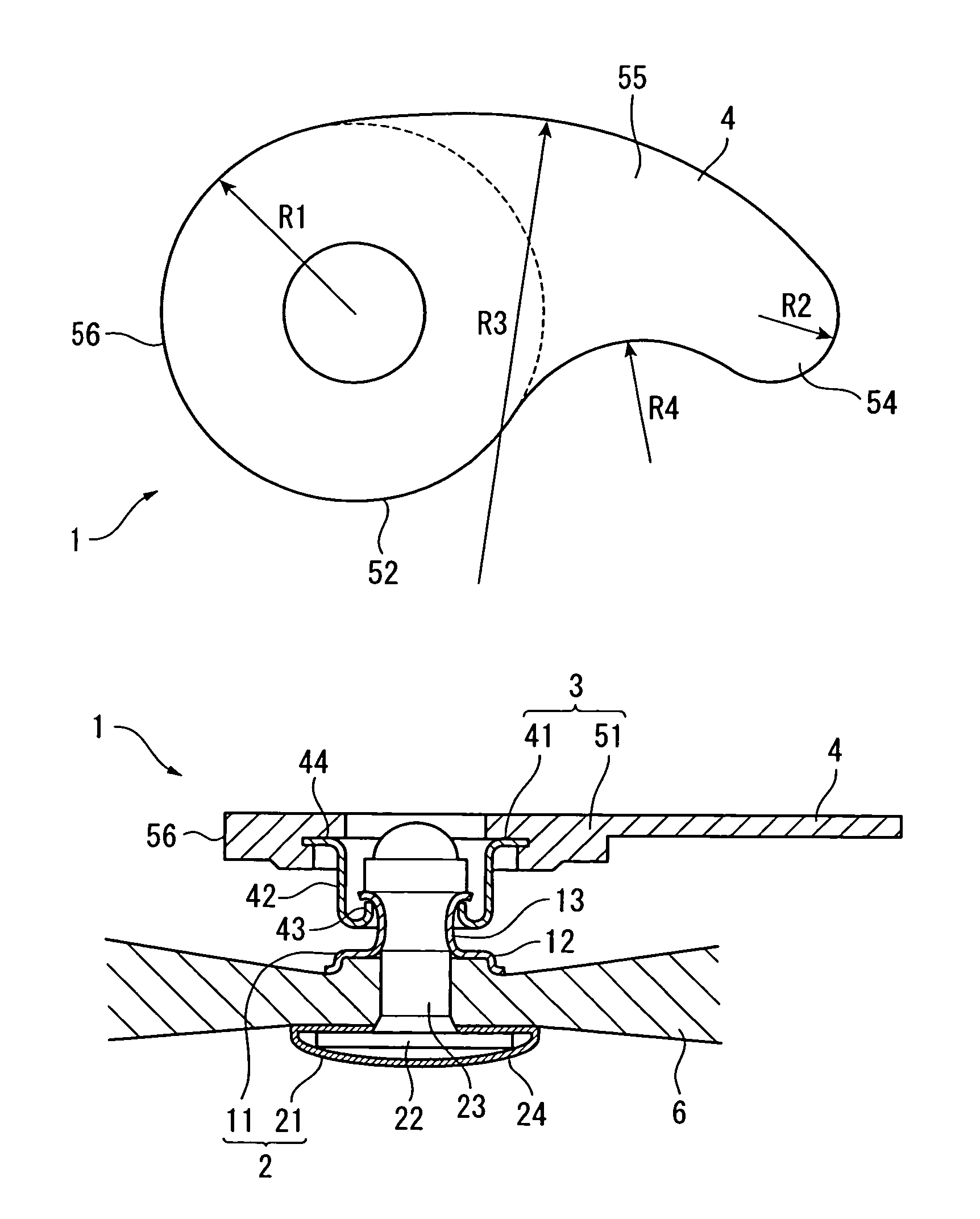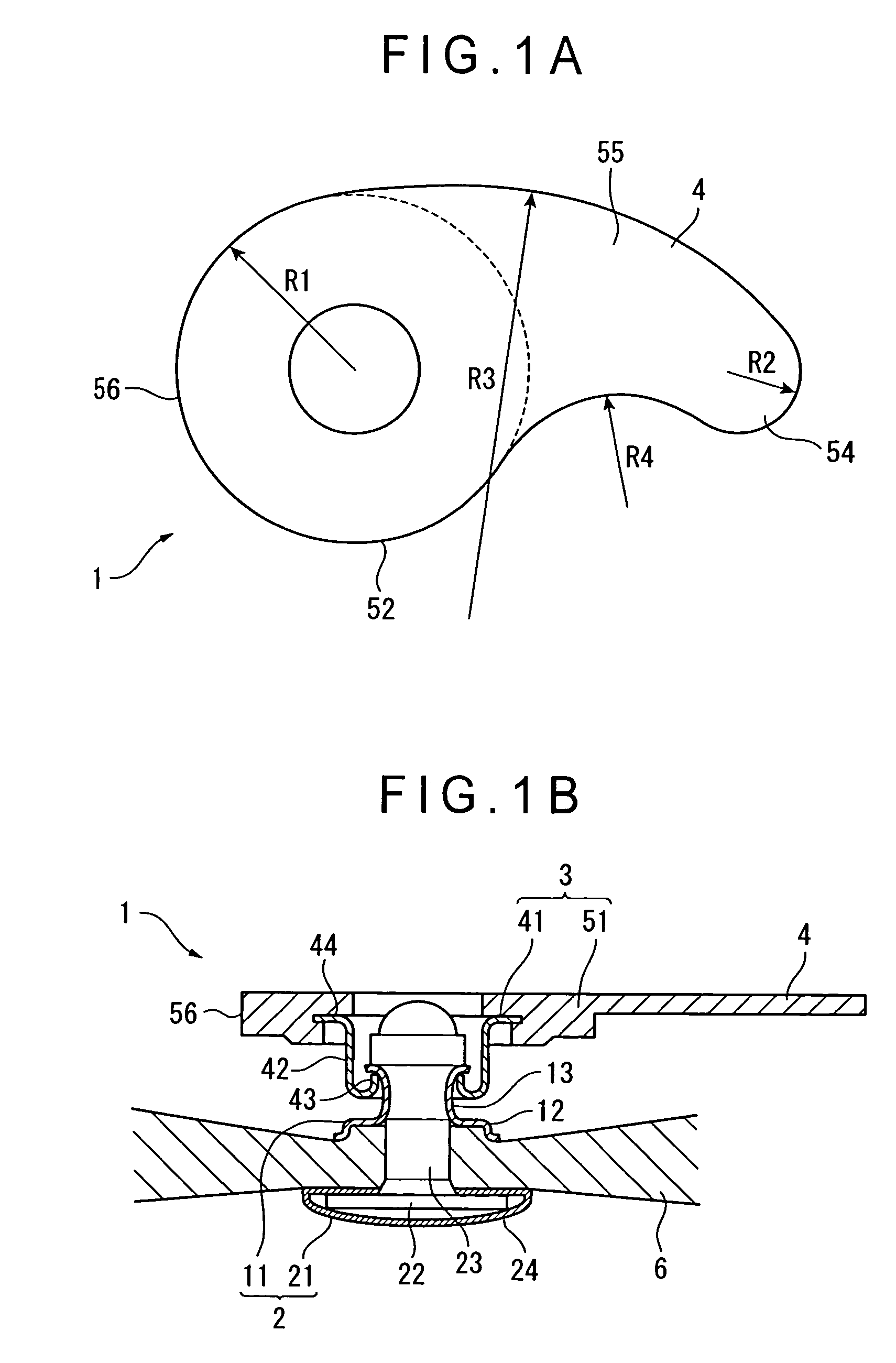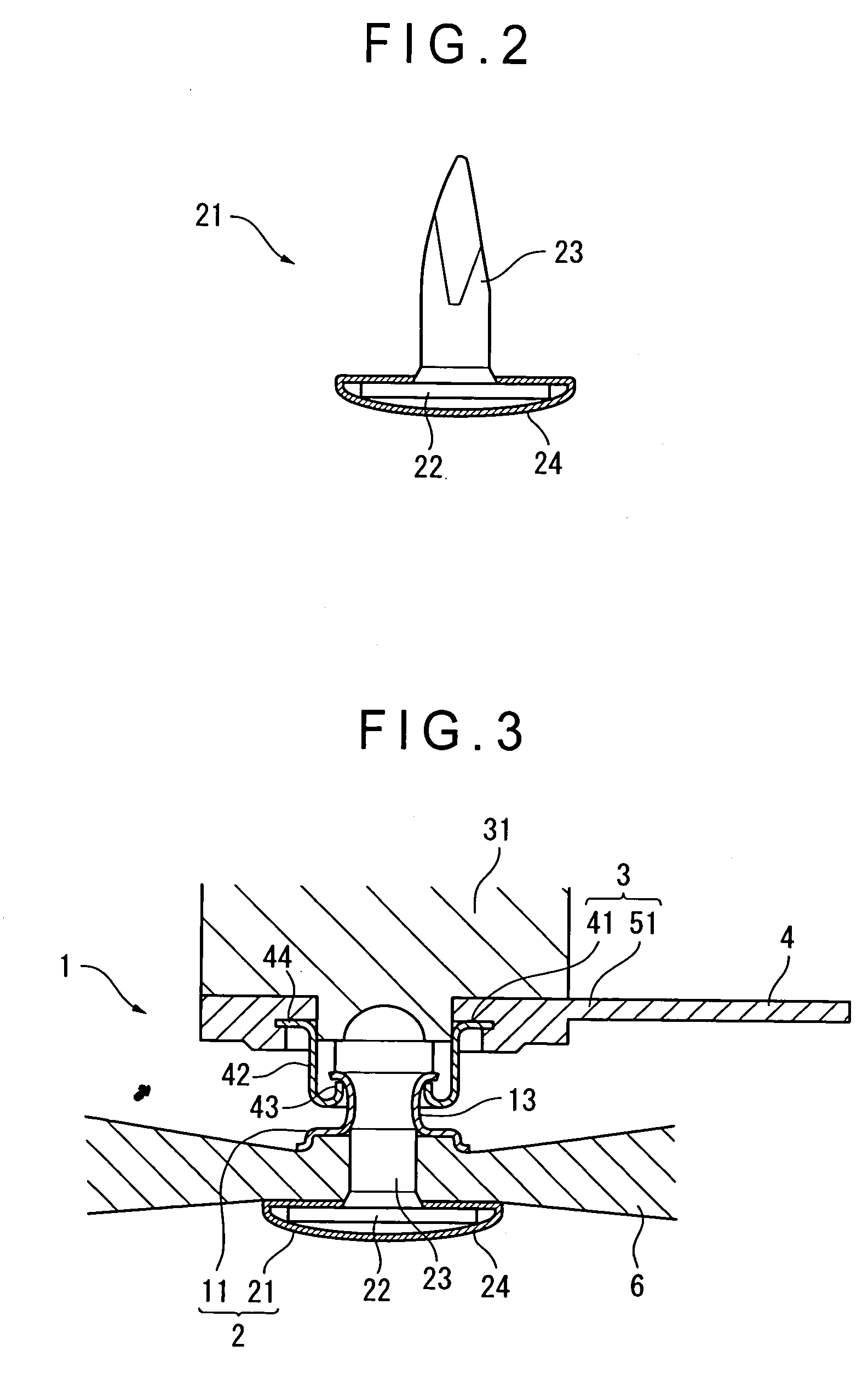Button
a button and button technology, applied in the field of buttons, can solve the problems of troublesome operation, inability to completely solve the difficulty of fastening and unfastening the button through the buttonhole, and the difficulty of fastening and unfastening the button, so as to reduce manufacturing and assembly processes, the effect of easy bending
- Summary
- Abstract
- Description
- Claims
- Application Information
AI Technical Summary
Benefits of technology
Problems solved by technology
Method used
Image
Examples
first embodiment
[First Embodiment]
[0055]FIGS. 1A and 1B show a first embodiment with a button of the present invention applied to the button for jeans, and FIG. 1A is a plan view while FIG. 1B is a sectional view. As shown in FIGS. 1A and 1B, the button of the first embodiment has a button body 1 including an attachment to a first fabric 6 and an extending portion 4 extending from the button body 1 in a predetermined direction, and is so formed that the button can be fastened into and unfastened from a buttonhole provided to a second fabric (not shown).
[0056]The button body 1 includes an attachment member 2 forming an attachment to the first fabric 6, and a cover member 3 turnably and swingably held on a front side of the attachment member 2. In other words, the cover member 3 is turnably and swingably held to the first fabric 6 through the attachment member 2.
[0057]The attachment member 2 has a front side fixing tube 11 applied to the front side of the first fabric 6, and a back side fixture 21 pe...
second embodiment
[Second Embodiment]
[0077]FIG. 12 shows a button according to a second embodiment of the present invention. The button in the second embodiment differs from the button in the first embodiment only in its cover member.
[0078]The cover member 3A of the present embodiment has a metal connector 41A as a connecting member that is turnably held by the attachment member 2 (the front side fixing tube 11), and a die-cast cover 51A engaged with the front side of the connector 41A.
[0079]According to the present embodiment, the cover 51A including the extending portion 4, the insert portion 54, the guide 55 and the widening member 56 is formed by die-casting. Since the die-cast cover 51A can also function as a die caulking and deforming the back side fixture when the back side fixture is caulked from the opposite side of the attachment member 2 with a fabric sandwiched therebetween, it can be easily attached to a fabric.
third embodiment
[Third Embodiment]
[0080]FIG. 13 shows a button according to a third embodiment of the present invention. The button in the third embodiment differs from the button in its first embodiment only in the cover member.
[0081]The cover member 3B has a connector 41B as a connecting member turnably held by the attachment member 2 (front side fixing tube 11), and a cover 51B provided on the front side of the connector 41B, and the connector 41B and the cover 51B are integrally molded by metal plate press working. The connector 41B and the cover 51B are processed to have the edge rolled up toward inside (for safety).
[0082]According to the present embodiment, since the cover 51B including the extending portion 4, the insert portion 54, the guide 55 and the widening member 56 is integrally molded with the connector 41B by metal plate press working, it can be processed easily with low cost.
PUM
 Login to View More
Login to View More Abstract
Description
Claims
Application Information
 Login to View More
Login to View More - R&D
- Intellectual Property
- Life Sciences
- Materials
- Tech Scout
- Unparalleled Data Quality
- Higher Quality Content
- 60% Fewer Hallucinations
Browse by: Latest US Patents, China's latest patents, Technical Efficacy Thesaurus, Application Domain, Technology Topic, Popular Technical Reports.
© 2025 PatSnap. All rights reserved.Legal|Privacy policy|Modern Slavery Act Transparency Statement|Sitemap|About US| Contact US: help@patsnap.com



